It’s just the coronavirus we have to worry about, isn’t it? – Not quite. It is certainly true that the 2020/21 flu season virtually passed us by thanks to the corona measures also hindering the influenza. The generally applicable protection rules, such as the “AHA” rule (Abstand, Hygiene, Atemschutz – distance, hygiene, mask), proved effective in this regard too. However, these measures only apply to viruses passed from person to person. What about a virus passing from an animal to a human? A well-known example of this is avian influenza or bird flu, which can be traced back to the H5N8 virus.
As the name indicates, this virus spreads among poultry. Nevertheless, there have been a small number of cases of people being infected by the virus. People who are particularly at risk are those who work with potentially infected birds – in the poultry farming sector, for example. To prevent infection, personal protective equipment (PPE) is of paramount importance. Find out below how protective clothing from uvex plays a role in curtailing the spread of bird flu.
Bird flu – a potentially fatal zoonotic disease
Compared with SARS-CoV-2, other pathogens are currently being forced into the background somewhat. But the example of bird flu illustrates how quickly and effectively viruses can spread around the world and cause major damage – even if it is predominantly the animal population that is affected in this case. The virus first occurred in 2004. Most recently in 2016, chickens had to be culled and disposed of on a large scale due to an outbreak of bird flu in Germany. Infected birds were discovered in Europe in Austria, Switzerland, Holland, Denmark, Hungary and Poland.
While the coronavirus is transmitted directly from person to person, people are infected with bird flu by coming into contact with animals. However, both cases are originally zoonotic diseases, meaning diseases that are passed from an animal to a human. Today, these include around 200 diseases that are caused by proteinaceous infectious particles, viruses, bacteria, fungi etc.
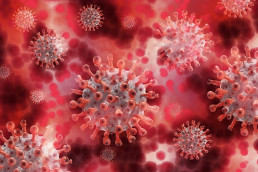
A parallel between bird flu and the coronavirus is that they are both zoonotic diseases. But while the coronavirus can be transmitted very easily from person to person, infections with the bird flu virus primarily take place from animal to human. Once infected with bird flu, people may have typical flu symptoms, such as a fever, cough and sore throat. However, it can also cause shortness of breath and even pneumonia. If serious complications occur as a result, bird flu can even be fatal.
Risk groups: who should take safety measures against bird flu?
How can people avoid coming into contact with infected birds to protect their health when their occupation has something to do with birds? The list of professional groups exposed to the risk is long.
There is a particular focus on employees in:
- The agricultural sector
- Veterinary medicine
- The public health sector
- Transport services
- Feed production
- Disposal companies
Hunters and those who are part of voluntary fire brigades, such as the Bavarian Red Cross (BRK) or the German Life Saving Association (DLRG) are – as in the past – exposed to a heightened risk during clean-up operations, for example.
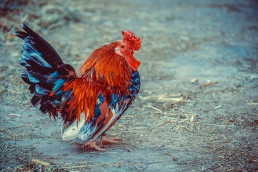
If you fall into one of the risk groups that come into direct contact with infected animals or animal carcasses, it is essential that you wear appropriate protective clothing. Doing so will enable you to protect your own health but also prevent bird flu from spreading further. Additional equipment for the professions concerned include clothing that can be disinfected and safety boots.
The range of protective clothing of any kind to choose from is large. But before companies go ahead and order protective clothing, it is worth taking a look at how the bird flu virus is transmitted. With this knowledge, companies can make valuable conclusions according to which criteria occupational safety officers in the company can choose appropriate protective equipment.
How is bird flu transmitted and what protective equipment is effective?
The good news: unlike the highly infectious coronavirus, humans have to take in relatively large amounts of the bird flu virus to become infected with it according to the Robert Koch Institute. With the right safety measures at work, infection can therefore be prevented with a high degree of probability.
In general, it is advisable to simply keep away from poultry. In day-to-day life, this is certainly a sufficient way for most citizens to avoid infection. However, in the fields of work mentioned above, this advice is naturally not so easy to heed.
In terms of how bird flu is transmitted, there are basic parallels to the coronavirus: both can be transmitted via aerosols in the air and by means of smear infection via mucous membranes. With regard to bird flu, the main viral load is found in the bodily secretions of infected animals. Direct contact with blood and saliva as well as faeces must be avoided at all times. This means that the hands and face in particular must be protected.
Liquid-tight safety gloves
Safety gloves with long gauntlets are used primarily to protect the hands. At the same time, it must be ensured that the gloves used are
- liquid-tight
- tear-resistant
- and can be disinfected.
uvex offers a wide range of safety gloves that fulfil these requirements. What is more, uvex safety gloves are characterised by their exceptional fit. Lastly, a number of hand grips are required to complete tasks correctly. So that wearers do not suffer from fatigue and gloves are worn consistently, uvex safety gloves are exceptionally comfortable to wear and offer a secure grip.
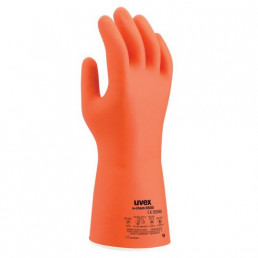
Particle-filtering respiratory protection
Mucous membranes in airways such as the mouth and nose are the main entry points for viruses. Viruses can be transported into the airways through contact with a person’s own hands as well as via the air – if dust forms, for example. For this reason, high-quality respiratory protection is essential for work with potentially infected animals. In their guidelines on the avian influenza, the Federal Institute for Occupational Safety and Health (BAUA) recommends protection class FFP3. The integrated particle protection filters out viruses that are found in inhaled air so that they cannot enter the airways.
uvex respirators are also available with an exhalation valve. An exhalation valve makes wearing the masks over longer periods considerably more comfortable because heat and liquid can escape through it. Finally, in contrast to the coronavirus, bird flu is not likely to be spread by the air exhaled by carriers. Rather, they must primarily be protected against inhaling contaminated air.
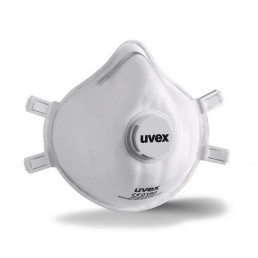
Safety spectacles with clear visibility
Even though the eyes are not part of the airways, they are directly connected to them via the tear duct and paranasal sinuses, making them exposed areas in the fight against viruses. The eyes must therefore be protected with goggles against dust and liquid splashes that may contain viruses. Safety spectacles also prevent people from touching their eyes with their hands, to which materials containing a virus can adhere.
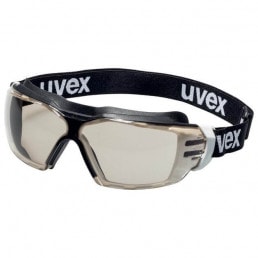
As is the case with all protective equipment from uvex, wearer comfort has already been taken into account in uvex safety spectacles. This ensures that personal protective equipment primarily serves to provide personal protection and does not hinder employees in carrying out their tasks. Safety spectacles from uvex do not limit the wearer’s field of vision; in particular, the wearer’s peripheral vision is unrestricted. The ergonomic design also prevents painful pressure points from developing on the nose and head when the glasses are worn for prolonged periods of time. This ensures that the spectacles can be worn comfortably over extended periods of time – even when combined with uvex face masks for respiratory protection. Because one thing is clear: only protective equipment that is worn at all times can protect the wearer from becoming infected.
Other important components of personal protective equipment
With uvex protective clothing, employees can protect themselves from head to toe while working. Examples of other elements of effective personal protective equipment include:
- Type 4, 5 or 6 (liquid-tight type 3 if necessary) full-body protective suits (disposable or a design that can be disinfected)
- Headgear that completely covers the hair
- Liquid-tight rubber boots that can be disinfected
- Chest waders, where applicable, (for retrieving deceased water birds) and other application-specific add-on equipment or protective clothing
Putting on and removing PPE correctly
Viruses certainly do not take breaks or evenings off – although we obviously do. Because it has been proven that the process of putting on and removing protective clothing is particularly prone to errors, it is a good idea to instruct employees on the proper use of personal protective equipment before and especially after possible contact with infectious substances. After all, PPE can only protect the wearer when it fits correctly and is also taken off correctly.
In particular, reusable PPE must immediately be deposited in airtight containers when they are no longer being worn. Only in such appropriate containers may PPE then be taken to be cleaned and disinfected. On the other hand, disposable protection must be promptly disposed of in the proper way. The Institute for Occupational Safety has published guidelines on this too in order to support occupational safety officers in companies.
Answers to other questions on bird flu
The Robert Koch Institute provides answers to the most frequently asked questions regarding bird flu. The website of the World Health Organisation (WHO) also discusses the topic in detail and the Friedrich-Löffler-Institute for animal health regularly publishes new research reports on animal diseases.
Do you deal with potentially infected animals and would like to know whether your personal protective equipment from uvex is suitable for such work? – The uvex service team will be happy to help you further. Send us an email at: serviceteam@uvex.de. Please share your personal experience with this topic and leave a comment.
Thanks for information